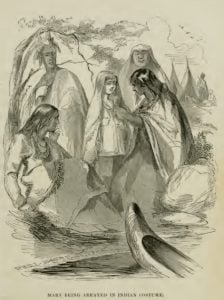We again hear of the Tuscarora by history, concerning a massacre of the German Flats, N. Y., in November, 1757. A narrative communicated to the author of the Documentary History of New York, vol. 2, page 520, viz: A few days after this massacre and desolation had been perpetrated, Sir William Johnson dispatched Geo. Croghan, Esq., Deputy Agent, with Mr. Montour, the Indian interpreter, to the German Flats, where he understood several of the Oneida and Tuscarora Indians were assembled, in order to call upon them to explain why they had not given more timely notice to the Germans of … Read more

